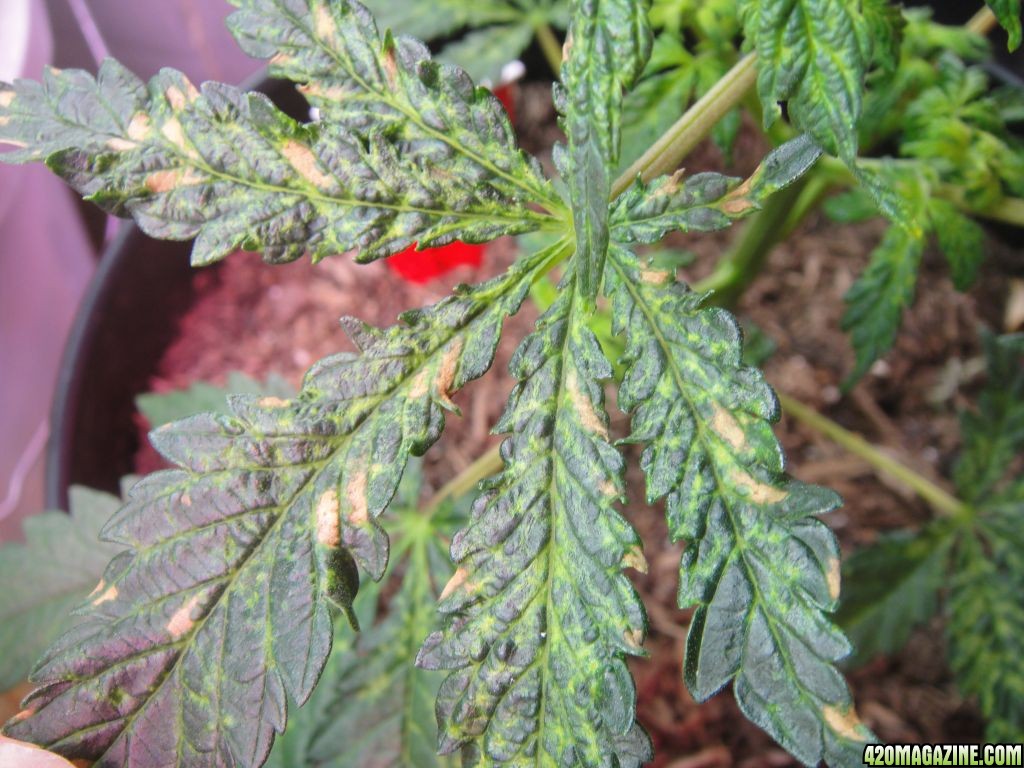Ok guys, sorry this took me so long but I had to leave town. Everything looks to be fine in the garden except for the bubblegummers which i will post a couple pics of in a second, nut here are some recent photos from the flowering room to give you a better idea of what I am working with. I am also positive I just need to Veg the plants longer, I was only giving them a week or two after they hit maturity... But anyways my new major concern is the two bubblegummer. They have gotten exactly the same treatment as all the other plants but they look horrible and I don't understand. Also it seems that after the new growth comes in all nasty and twistedm it seems to get more normal over time. Someone please HELP!!!This is ow all leaves look, post another in a sec.
From Hemp Diseases and Pests:
Phosphorus : Excess P reduces the availability of zinc, iron, magnesium, and calcium in new leaves. Watch for deficiency symptoms of these elements, especially zinc.
Zinc : Deficiency causes interveinal chlorosis of younger leaves. New leaves grow torqued and twisted, and may drop off the plant prematurely. Flowers grow small and deformed, stems are short and brittle.
Iron : Young leaves deficient in iron develop interveinal chlorosis with green veins, like symptoms of Mn deficiency. Leaves may turn completely white with necrotic margins.
Magnesium : Deficiency causes older leaves to develop interveinal chlorosis - the margins between leaf veins turn yellow, leaving only dark green veins. In extreme cases leaves turn white. Berger described grey-white spotting in lower leaves of stunted plants.
Calcium : Deficient leaves are distorted and withered, their margins curl, and tips hook back. Apical buds may wither and die. Plants are stunted, stalks are brittle, roots are discolored and excessively branched.
Excessive phosphorus or phosphorus toxicity, maybe?





